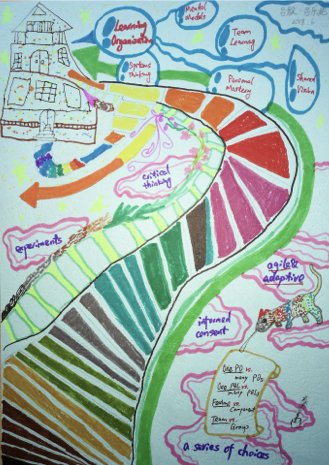Exploring different mental models
(Originally published on Odd-e’s blog)
A mental model reflects an individual’s beliefs, values, and assumptions. As those are internal, we need to somehow express them in order to learn and improve. Causal Loop Diagram (CLD) is a powerful technique from Systems thinking. Models created using CLD often reflect the mental models of people creating them. We could explore different mental models by simply doing advocacy and inquiry with CLD. Balancing advocacy and inquiry is one key practice for the discipline of mental models, among the five disciplines from the classical “The fifth discipline” book.
In this article I’d like to share with you an example. It came from my CLP when we were doing system modeling for the number of backlogs and its impact on adaptiveness.

 by
by 
 by
by